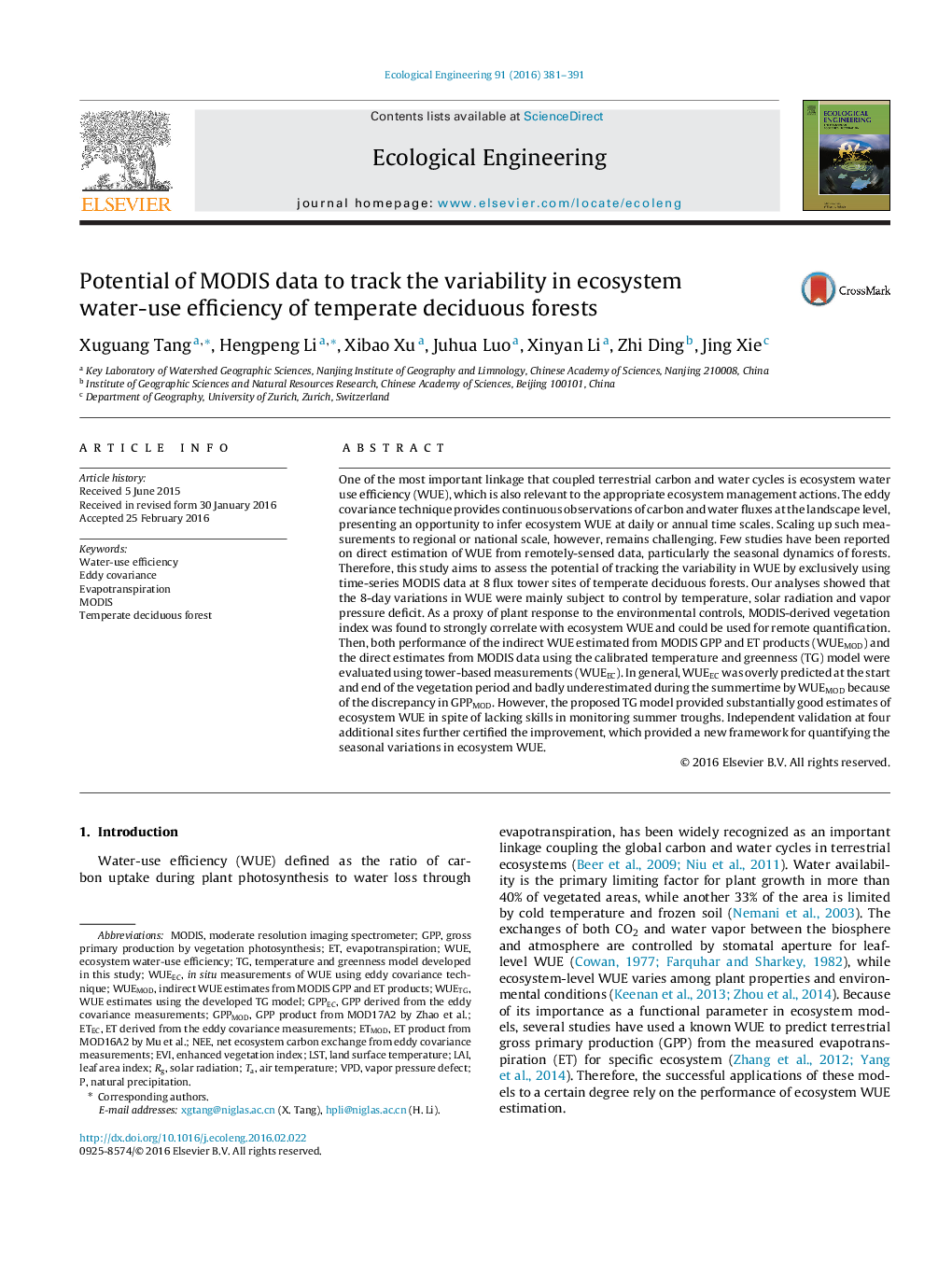| کد مقاله | کد نشریه | سال انتشار | مقاله انگلیسی | نسخه تمام متن |
|---|---|---|---|---|
| 6301354 | 1618008 | 2016 | 11 صفحه PDF | دانلود رایگان |
عنوان انگلیسی مقاله ISI
Potential of MODIS data to track the variability in ecosystem water-use efficiency of temperate deciduous forests
دانلود مقاله + سفارش ترجمه
دانلود مقاله ISI انگلیسی
رایگان برای ایرانیان
کلمات کلیدی
LSTEVIETECWUEVPDGPPWater-use efficiency - بهره وری استفاده از آبMODIS - تابشسنج طیفی تصویربرداری با وضوح متوسط یا MODIS Evapotranspiration - تبخیر و تعرقTemperate deciduous forest - جنگل های باتلاقی معتدلLST, Land surface temperature - دمای سطح زمینAir temperature - دمای هواEnhanced Vegetation Index - شاخص رشد گیاهیLeaf area index - شاخص سطح برگLAI - شبیهNEE - نهSolar radiation - نور سفید خورشیدEddy covariance - کوواریانس اودی
موضوعات مرتبط
علوم زیستی و بیوفناوری
علوم کشاورزی و بیولوژیک
بوم شناسی، تکامل، رفتار و سامانه شناسی
پیش نمایش صفحه اول مقاله

چکیده انگلیسی
One of the most important linkage that coupled terrestrial carbon and water cycles is ecosystem water use efficiency (WUE), which is also relevant to the appropriate ecosystem management actions. The eddy covariance technique provides continuous observations of carbon and water fluxes at the landscape level, presenting an opportunity to infer ecosystem WUE at daily or annual time scales. Scaling up such measurements to regional or national scale, however, remains challenging. Few studies have been reported on direct estimation of WUE from remotely-sensed data, particularly the seasonal dynamics of forests. Therefore, this study aims to assess the potential of tracking the variability in WUE by exclusively using time-series MODIS data at 8 flux tower sites of temperate deciduous forests. Our analyses showed that the 8-day variations in WUE were mainly subject to control by temperature, solar radiation and vapor pressure deficit. As a proxy of plant response to the environmental controls, MODIS-derived vegetation index was found to strongly correlate with ecosystem WUE and could be used for remote quantification. Then, both performance of the indirect WUE estimated from MODIS GPP and ET products (WUEMOD) and the direct estimates from MODIS data using the calibrated temperature and greenness (TG) model were evaluated using tower-based measurements (WUEEC). In general, WUEEC was overly predicted at the start and end of the vegetation period and badly underestimated during the summertime by WUEMOD because of the discrepancy in GPPMOD. However, the proposed TG model provided substantially good estimates of ecosystem WUE in spite of lacking skills in monitoring summer troughs. Independent validation at four additional sites further certified the improvement, which provided a new framework for quantifying the seasonal variations in ecosystem WUE.
ناشر
Database: Elsevier - ScienceDirect (ساینس دایرکت)
Journal: Ecological Engineering - Volume 91, June 2016, Pages 381-391
Journal: Ecological Engineering - Volume 91, June 2016, Pages 381-391
نویسندگان
Xuguang Tang, Hengpeng Li, Xibao Xu, Juhua Luo, Xinyan Li, Zhi Ding, Jing Xie,